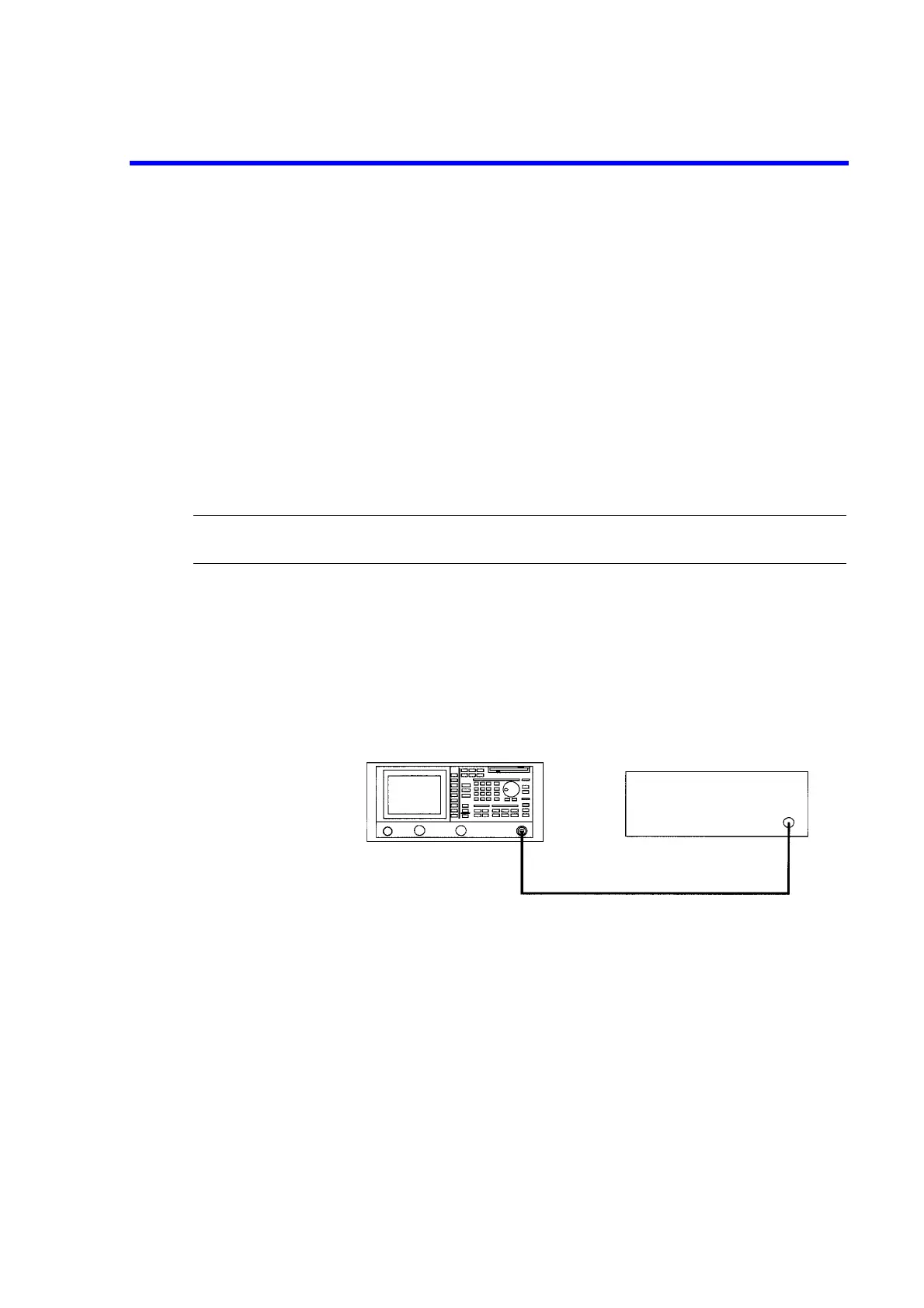R3131 Spectrum Analyzer Operation Manual
2.3 Measurement Examples
2-65Jul 10/98
2.3.3 Measuring Adjacent Channel Leakage Power (ACP)
The adjacent channel leakage power (ACP) function calculates the ratio of the power in the specified
bandwidth obtained by integration to the total power (obtained from the data on the screen).
Measurement conditions:
This example shows how to measure the ACP at a specified bandwidth of 192 kHz and an offset of 600
kHz or 900 kHz for a unit under test (complying with PHS Satndards) PHS outputting a frequency of
1895.15 MHz, and a level of 0 dBm.
Use appropriate parameter values to make the measurements shown below.
There are two methods used to measure ACP:
• ACP POINT: Calculates the channel leakage power using the specified channel spacing.
• ACP GRAPH: Calculates the leakage power within the specified bandwidth for each of the fre-
quency points, displays the resulting trace and temporarily stores it as trace B.
NOTE: The dynamic range is reduced when the signal level is considerably less than the reference level. The
required span is four to five times the channel spacing.
2.3.3.1 Measurements using the ACP POINT Method
Setup
1. Connect the unit under test as shown in Figure 2-60.
Figure 2-60 Setup for Measuring the Adjacent Channel Leakage Power
Power on
2. Turn the power on.
Setting the unit under test
3. Turn on the signal output for the unit under test.
R3131 Spectrum analyzer
Unit under test
